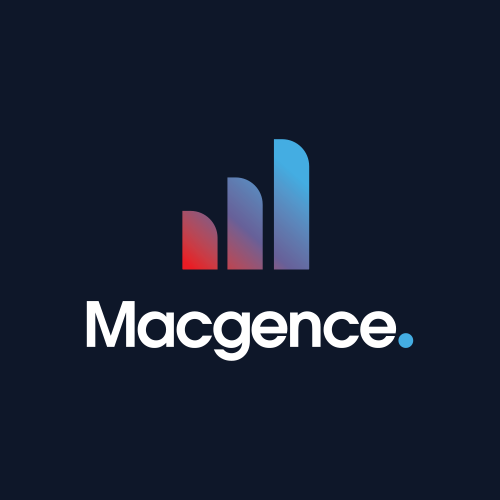Notifications

8 minutes, 24 seconds
-46 Views 0 Comments 0 Likes 0 Reviews

Data-driven innovations are reshaping the banking sector, and at the heart of these advancements is banking data annotation. From fraud detection to personalized customer experiences, data annotation serves as the backbone of effective and efficient AI models in banking. But what exactly is data annotation in this context, and why is it crucial?
This blog explores the intricacies of banking data annotation, its challenges, key use cases, best practices, and future trends. Whether you're an AI developer, banking professional, or data scientist, you'll learn how accurate labeling and annotation can revolutionize financial services.
Data annotation in banking involves labeling datasets to train machine learning (ML) and artificial intelligence (AI) models for specific tasks. These datasets often contain sensitive financial information, customer records, and transactional data. Properly annotated data helps AI systems recognize patterns, detect anomalies, and make predictions with accuracy.
For example, an AI system identifying fraudulent activities in transactions requires annotated examples of both legitimate and fraudulent records. These labels enable the model to differentiate between normal and suspicious activities effectively.
At Macgence, a leading provider of annotated data for AI/ML models, we specialize in delivering high-quality datasets curated for banking applications to help industries streamline their AI adoption.
Despite its potential, banking data annotation comes with several unique challenges.
Banking data often contains Personally Identifiable Information (PII), such as account numbers, Social Security numbers, and contact details. Securing this information while annotating data is a major compliance hurdle. Choosing annotation platforms with secure data storage and robust privacy protocols is crucial.
The complexity of banking datasets can overwhelm annotation tools and professionals. Data ranging from transactions to credit scores requires advanced domain expertise. Without proper understanding, even high-tech AI systems can produce inaccurate predictions.
Banking datasets are enormous, making it difficult to scale annotation efforts. A balance must be struck between annotating vast datasets efficiently and ensuring accuracy during the process.
Annotation tasks often rely on human experts, and errors in labeling can skew machine learning model performance. Maintaining annotation accuracy is both time-consuming and resource-intensive.
By addressing these obstacles systematically, professionals can unlock the full potential of data annotation in the world of banking.
Banking data annotation supports a wide range of applications in financial services. Here are some key use cases.
Annotated datasets provide AI models with examples of fraudulent and non-fraudulent activities. These systems monitor real-time transactions to flag anomalies, minimizing financial losses and ensuring compliance with anti-fraud regulations.
Data annotation enables ML models to analyze an individual's credit behavior. With annotated records, these systems calculate credit scores with greater precision, improving lending decisions for banks.
AI chatbots trained with annotated conversational data can understand and address customer queries more effectively. From assisting with account balances to resolving complaints, these tools enhance the customer experience.
Annotated financial data helps AI models forecast risks, such as loan defaults or market instabilities. This allows financial institutions to devise strategies proactively, safeguarding profitability.
AI models trained on annotated customer behavior data can recommend tailored products, such as credit cards or investment plans. This enhances customer engagement and drives higher conversion rates.
Annotation quality directly impacts the performance of AI and ML models. Here are some best practices to ensure accurate banking data annotation:
Always select annotation tools and platforms with secure data transfer and storage protocols to maintain the confidentiality of banking data.
Collaborate with experts who possess in-depth banking and financial knowledge. Their expertise is essential for understanding and annotating nuanced datasets.
Combine human annotation efforts with AI-assisted labeling tools. Automation can speed up repetitive tasks while human reviewers ensure high accuracy.
Implement quality control processes, such as peer reviews or precision checks, to identify and correct errors early.
Familiarize yourself with regulations like GDPR, CCPA, and PCI DSS. Always prioritize regulatory compliance throughout the annotation process.
Working with trusted companies like Macgence, who specialize in banking data annotation, streamlines operations and guarantees high-quality labeled datasets.
The evolution of AI and ML technologies continues to shape the future of data annotation in banking. Here are some trends to watch for:
Natural Language Processing (NLP) is improving rapidly, enabling annotation tools to label unstructured data like customer emails, transaction descriptions, and chat logs more effectively.
AI tools powered with real-time annotation capabilities will make it possible to train models on-the-go, refining them continuously for incremental improvements.
Synthetic data generation is reducing dependency on real-world datasets, making annotation less resource-heavy while safeguarding sensitive information.
Emerging technologies like blockchain are being explored for decentralized and tamper-proof annotation environments, bolstering data privacy and security.
Crowdsourced annotation is becoming a popular trend, where multiple contributors worldwide pool their expertise for projects requiring diverse perspectives.
Banking data annotation is no longer optional for financial institutions that wish to leverage AI for efficiency, accuracy, and innovation. By using secure tools, implementing best practices, and collaborating with expert partners like Macgence, organizations can fuel their AI models with annotated data that exceeds industry standards.
1. What is banking data annotation?
Banking data annotation involves labeling financial datasets to train AI/ML models for tasks like fraud detection, credit scoring, and customer support automation.
2. Why is data annotation important for AI in banks?
Data annotation is critical for ensuring AI models learn effectively, delivering accurate predictions, and improving operational efficiency in complex financial workflows.
3. How can I ensure the security of annotated banking data?
Choose secure annotation platforms, implement role-based access controls, and partner with providers like Macgence to guarantee encrypted handling of sensitive data.

